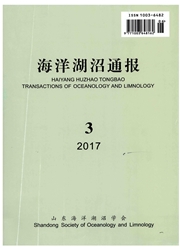

 中文摘要:
中文摘要:
中国北方的风尘沉积为研究区域构造隆升和全球气候变化提供了宝贵的材料。近20年来.尽管风尘沉积的古气候研究取得重大进展,但地质历史时期风尘的物源是否存在变化仍有很大争议。石英结晶度(CI)是黄土物源研究的可靠指标,本文用粉末X射线衍射仪对灵台剖面(-6.8Ma-0)和庄浪岩心(~23.0-4.8Ma)风尘沉积中石英结晶度进行了测量,发现灵台剖面石英的结晶度在时间序列没有明显的变化;庄浪钻孔的石英结晶度在~14.0—8.7Ma明显的增大,表明风尘的物源在此存在变化。这种变化可能是由于此时段全球气候变冷和青藏高原隆升导致青藏高原东北部相对中亚造山带剥蚀量的增加引起的。
 英文摘要:
英文摘要:
Eolian deposits in north China provides a precious material to study the regional tectonic uplift and the global climate change. Over the past two decades, although the loess research has made great achievements, the debate still existed on whether the loess provenance had changed during the geological past. Crystallinity Index (CI) of quartz, as a reliability index to trace the loess provenance, was measured for Lingtai (LT, -6.8-0 Ma) and Zhuanglang(ZL, -23. 0-4. 8 Ma) sections. The results show that the CI at Lingtai section doesn't change significantly, whereas at Zhuanglang section it varies remarkably during - 14.0-8.7 Ma, indicating a signficant change of the dust provenance. Such a provenance change maybe caused by the increased denudation of the NE Tibet plateau comparing with central Asian orogen.
 同期刊论文项目
同期刊论文项目
 同项目期刊论文
同项目期刊论文
 期刊信息
期刊信息
